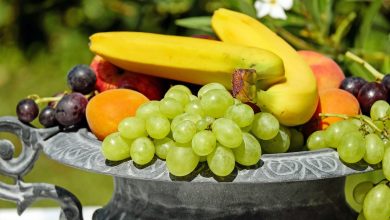Imports of fresh fruits and vegetables from the United States continue to increase

Last year, the United States again imported the largest amounts of fruits and vegetables: 22.1 million tons, or 3% more than in 2021. Imports also gradually increased in previous years. The United States is far from European farms, so import prices for fresh fruits and vegetables increased by 8%. This brings the value of 2022 imports to more than $28 billion, making the United States by far the largest global importer. Germany comes second with a value that is half that of the United States.
The United States is slowly exporting fewer fruits and vegetables. In 2022, exports decreased by more than 10% to 3.9 million tons. More than half of them go to Canada, and Mexico is also a big buyer. Last year, exports to the Netherlands fell sharply by 10% to 86,000 tons. Most of it had to do with sweet potatoes.
More than half of them come from Mexico
Just over half of US imports come from Mexico. Last year, it was 11.4 million tons, up 2% from 2021. In previous years, imports of Mexican products increased slightly, but faster than average.
Bananas are generally the most important imported product. However, from Mexico, tomatoes, square peppers, avocados, cucumbers, lemons, and watermelons are imported. In 2022, the United States imported the most tomatoes, 1.8 million tons, which is a record. Imports of Mexican avocados decreased significantly (-13%). In addition to tomatoes, the United States also imported a record volume of Mexican cucumbers in 2022.
Bananas are an important product
Long after Mexico, Guatemala is the second largest exporter of fresh fruits and vegetables in the United States. In 2022, it shipped 2.75 million tons, which is a record volume even though three-quarters of that was bananas.
Costa Rica came in third place last year, with about 1.83 million tons. Imports are now down. Pineapple is the most important product, accounting for about 60% of imports, followed by bananas. Canada follows a record of 1.13 million tons in 2022. Cucumbers, tomatoes, and square peppers are among the most important commodities that the United States imported from Canada.
Peruvian imports increased significantly
In fifth place is Peru. Last year, imports crossed the million-ton mark for the first time. In 2017, it was only 570 thousand tons. Imports of table grapes from Peru increased particularly rapidly, from less than 100,000 tons in 2017 to 250,000 tons in 2022. Onions, blueberries, avocados, and satsumas are the other major commodities the United States imported from Peru.
It is followed by banana countries such as Ecuador, Honduras, and then Chile, as Chilean imports decreased last year by 8%, to reach 760,000 tons. In 2018, they exceeded 900,000 tons. However, imports of Chilean table grapes increased significantly in 2022, an increase of 17%, reaching more than 300 thousand tons, offset by a sharp decline in imports of Chilean oranges, tangerines and apples. While imports of blueberries from Peru into the United States are growing rapidly, imports from Chile have declined in recent years.
More imports from Morocco and China
Among other suppliers, imports from China and Morocco have increased significantly. Those coming from China rose to 200,000 tons and from Morocco to 125,000 tons. China mainly supplies ginger, sweet potatoes, and garlic to the United States. From Morocco, mainly tangerines and oranges arrived.
In 2022, the US will again import smaller amounts from the Netherlands: 13,000 tons. In 2017 it was 34,000 tons. Since 2021, onions are the most important product. First up was square pepper, imports of which increased slightly in 2022. Each year, the United States imports about 1,000 tons, mostly chicory from Belgium.
Click here for more information (in Dutch).
for more information:
Jean Case Bon
Fruit and vegetable facts
[email protected]
www.fruitandvegetablefacts.com

“Devoted bacon guru. Award-winning explorer. Internet junkie. Web lover.”



